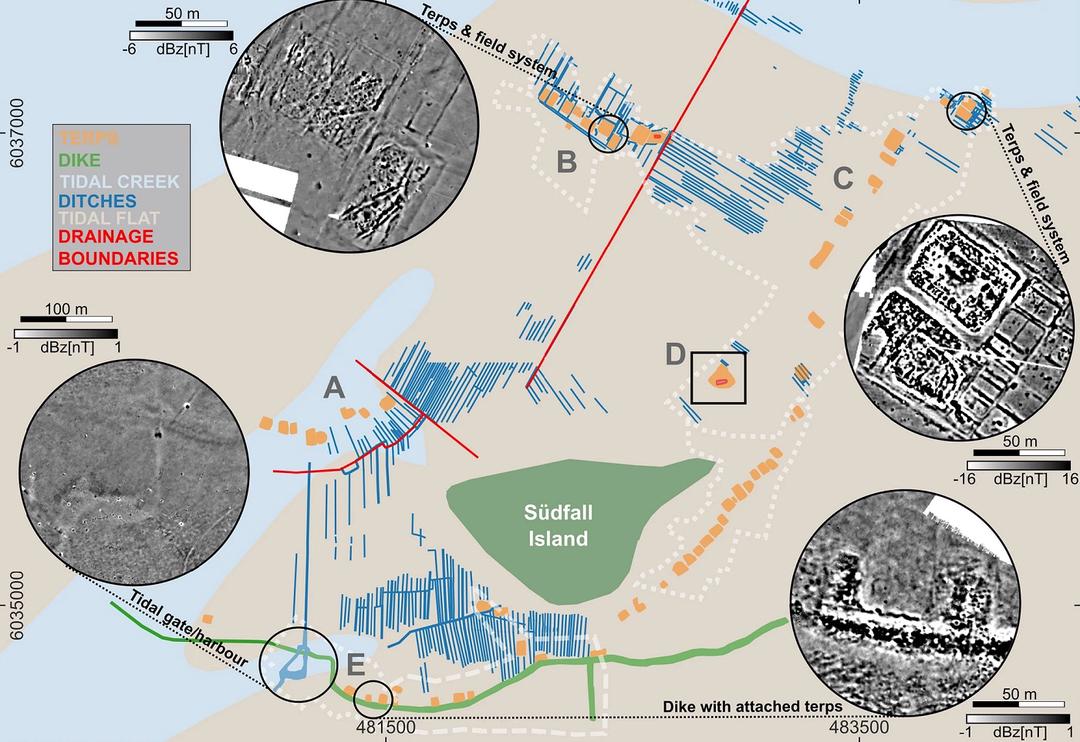Archaeologists map the lost town of Rungholt
Rungholt was a medieval town in North Frisia, that according to local legend, was engulfed by the sea during the Saint Marcellus’s flood in 1362.

Date:
July 6, 2024
The Saint Marcellus’s flood was an extratropical cyclone event that triggered a powerful storm tide, devastating the coastal regions of the British Isles, the Netherlands, northern Germany, and Denmark.
The storm tide peaked on the 16th January, the feast day of St. Marcellus, resulting in the deaths of around 25,000 people/
In 2023, archaeologists discovered a two-kilometre-long chain of medieval terps (settlement mounds) in the North Frisian Wadden Sea, including the possible remains of a large church.
In a study published in the journal Scientific Reports, archaeologists have presented a detailed reconstruction of the medieval landscape of Rungholt, featuring a network of drainage ditches, a sea dike, the proposed church, and 64 newly identified dwelling mounds.
Excavations have also unearthed imported high-quality objects, including lead-glazed redware and stoneware, cast bronze cauldrons, hammered brass cauldrons, swords, and hispano-moresque faience.
According to the study authors: “The basis of our prospection work is multi-channel magnetic gradiometry, which is applied during low tide. At key locations, the magnetic map is complemented by Electromagnetic Induction (EMI) measurements or marine seismic reflection profiles.”
This enabled the researchers to interconnect isolated settlement structures and reconstruct the wider settlement area, extending over an area of at least 10km2. Four main areas have been identified that have several rectangular terps arranged in a row.
A geophysical survey of a prominent terp, believed to be the site of the town’s church, has revealed two magnetic anomalies indicating a rectangular feature and a semi-circular structure.

By comparing their survey data to other known medieval churches still preserved in North Frisia, the researchers suggest that the structure is a Late Romanesque church with an integrated tower.
“The building must have been among North Frisia’s main churches and is most likely the one that provided a home and place of work for the clerical collegium,” said the study authors.
The datasets generated during and/or analysed during the current study are not publicly available due to cultural heritage reasons to protect the site.
Header Image Credit : Scientific Reports (Sci Rep)
Sources : Wilken, D., Hadler, H., Majchczack, B.S. et al. The discovery of the church of Rungholt, a landmark for the drowned medieval landscapes of the Wadden Sea World Heritage. Sci Rep 14, 15576 (2024). https://doi.org/10.1038/s41598-024-66245-0
No comments:
Post a Comment